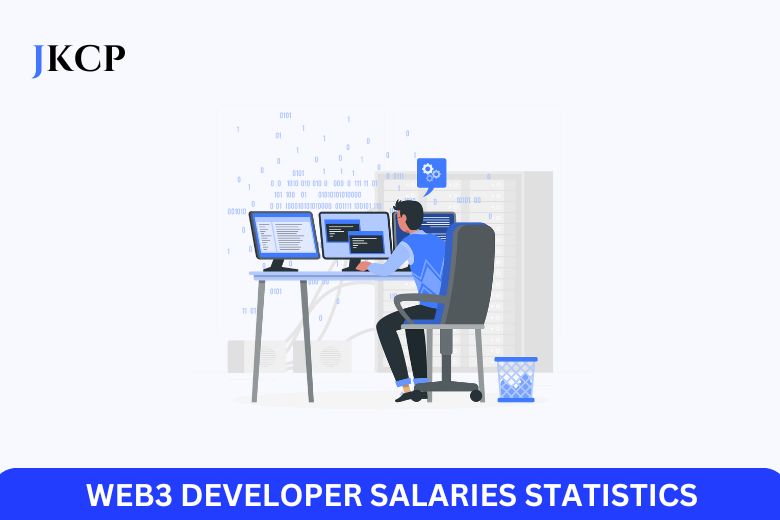Blockchain UX/UI Designer Salaries: An In-Depth Look
As blockchain technology continues to revolutionize various industries, the demand for skilled UX/UI designers in this niche has surged. Blockchain UX/UI designers play a crucial role in making complex blockchain applications user-friendly and accessible. With blockchain’s potential to disrupt everything from finance to supply chain management, the need for intuitive and seamless user experiences is more important than ever. This article delves into the salaries of blockchain UX/UI designers, providing insights into the factors influencing these salaries and current job market trends.
Salary Ranges and Averages
Blockchain UX/UI designer salaries can vary significantly based on several factors. According to Glassdoor, salaries for these roles typically range from $80,000 to $140,000 annually. Cryptocurrency Jobs reports an average salary of $97,000 per year, with senior positions commanding up to $150,000 annually. Another Glassdoor source, focused on Crypto Banter, indicates a slightly lower range, from $70,000 to $130,000 per year.
To put these numbers into perspective, consider that entry-level UX/UI designers in general (outside the blockchain space) often start with salaries around $50,000 to $70,000 annually. This highlights how blockchain specialization can significantly boost earning potential. For instance, a senior blockchain UX/UI designer at a major tech company or a well-funded startup can earn a salary well into the six figures, reflecting the premium placed on their expertise.
Factors Influencing Salaries
Experience and Seniority
Experience is a primary determinant of salary in the blockchain UX/UI design field. Entry-level designers can expect to earn on the lower end of the spectrum, while those with several years of experience or advanced skills may command higher salaries. Senior designers with a proven track record in blockchain projects are particularly sought after and can earn significantly more. For example, a designer with five years of experience working on blockchain applications might earn $120,000 annually, compared to $80,000 for someone with less experience.
Geographical Location
Location plays a critical role in salary variations. Designers working in tech hubs like San Francisco, New York, or London often receive higher salaries due to the higher cost of living and the concentration of blockchain companies. Conversely, designers in regions with a lower cost of living or fewer blockchain companies might see lower salary offers. For instance, a UX/UI designer in San Francisco might earn $130,000 annually, while a designer in Austin, Texas, might earn $110,000 for a similar role.
Company Size and Reputation
The size and reputation of the hiring company also influence salary levels. Established companies with substantial funding are likely to offer more competitive salaries compared to startups or smaller firms. Additionally, companies that are prominent in the blockchain space or those with high-profile projects tend to pay their designers more. For example, a blockchain UX/UI designer at a leading cryptocurrency exchange might earn more than a designer at a smaller, lesser-known blockchain startup.
Specific Skills and Expertise
Specialized skills and expertise in blockchain technology can significantly boost a designer’s salary. Proficiency in blockchain development, understanding of smart contracts, and experience with blockchain-specific design challenges are highly valued. Designers who can bridge the gap between complex blockchain technology and user-centric design are especially in demand. For instance, a designer proficient in both UX/UI design and blockchain development could command a higher salary, potentially upwards of $150,000 annually.
Job Market Trends
The job market for blockchain UX/UI designers is thriving, with increasing demand driven by the growing adoption of blockchain technology across various sectors. This demand is reflected in the competitive salaries offered to attract and retain top talent.
Increasing Demand
As more industries adopt blockchain technology, the need for user-friendly interfaces has become critical. Industries like finance, healthcare, and supply chain management are all exploring blockchain applications, increasing the demand for skilled UX/UI designers. For example, the rise of decentralized finance (DeFi) platforms has created numerous opportunities for designers to work on innovative financial products.
Remote Work Opportunities
The rise of remote work has also impacted salary ranges. Remote positions may offer slightly lower salaries compared to on-site roles in high-cost living areas, but they provide the advantage of broader job opportunities and work-life balance. Remote work allows companies to tap into a global talent pool, further increasing demand for skilled designers. For instance, a blockchain UX/UI designer working remotely from a lower-cost region might earn $90,000 annually, which is competitive compared to local salaries but lower than on-site roles in high-cost areas.
Future Outlook
The future looks promising for blockchain UX/UI designers. As blockchain technology continues to evolve and integrate into more applications, the need for intuitive and user-friendly interfaces will only grow. This trend suggests sustained demand for designers who can navigate the complexities of blockchain technology and enhance user experiences. The ongoing development of Web3 technologies, which aim to create a more decentralized internet, also points to increasing opportunities for blockchain UX/UI designers.
Skills and Qualifications
To excel as a blockchain UX/UI designer, certain skills and qualifications are essential. A strong foundation in UX/UI design principles is a given, but additional knowledge specific to blockchain technology sets designers apart.
Essential Skills
- Blockchain Understanding: A deep understanding of how blockchain technology works, including knowledge of decentralized networks, smart contracts, and consensus mechanisms. This knowledge allows designers to create interfaces that leverage the unique features of blockchain.
- Technical Proficiency: Skills in relevant design and prototyping tools, as well as familiarity with blockchain development platforms like Ethereum or Hyperledger. Designers should be comfortable using tools like Sketch, Figma, and Adobe XD, and have a basic understanding of coding languages like Solidity.
- User-Centric Design: Ability to create user-friendly interfaces that simplify complex blockchain processes for end-users. This involves understanding user needs and behaviors, and designing interfaces that provide a seamless user experience.
- Continuous Learning: Staying updated with the latest trends and advancements in both UX/UI design and blockchain technology. This can involve taking online courses, attending industry conferences, and participating in blockchain communities.
Tips for Continuous Learning
- Online Courses and Certifications: Platforms like Coursera, Udacity, and LinkedIn Learning offer courses on blockchain technology and UX/UI design.
- Industry Conferences and Meetups: Events like Blockchain Expo, UX Design Summit, and local blockchain meetups provide opportunities to learn from experts and network with peers.
- Community Involvement: Participating in blockchain communities on platforms like GitHub, Reddit, and Discord can help designers stay informed about the latest developments and best practices.
Conclusion
Blockchain UX/UI designers are integral to the success of blockchain applications, ensuring they are accessible and user-friendly. The salary landscape for these designers is competitive, influenced by factors such as experience, location, company size, and specific blockchain expertise. With the growing adoption of blockchain technology and the rise of remote work, the demand for skilled blockchain UX/UI designers is set to increase. Aspiring designers should focus on acquiring specialized skills and staying abreast of industry trends to capitalize on these opportunities. The future is bright for those who can bridge the gap between cutting-edge blockchain technology and exceptional user experiences.



